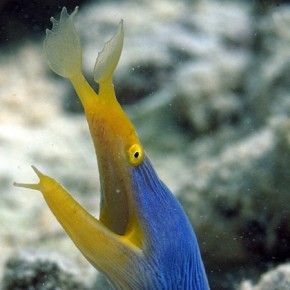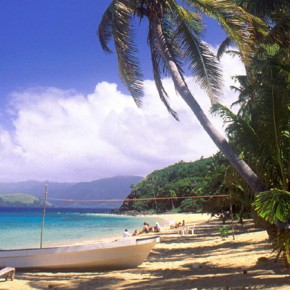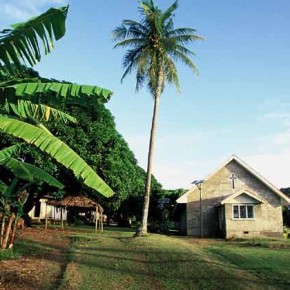Kadavu is the main island of Fiji’s southernmost island group. The archipelago includes Ono, Buliya, Yaukuve, Dravuni and numerous smaller islands, most of them uninhabited. They are essentially a cluster of volcanic masses, sheltered from the South Pacific ocean swells by one of the world's largest coral formations, the Great Astrolabe Reef.
Kadavu Island is Fiji’s fourth-largest island, 411 square kilometres (159 square miles). It is long and narrow, with the coastline shaped so that it appears almost cut in three sections by deep bays. It lies about 100 kilometres (62 miles) south of Fiji's main island, Viti Levu.
A rugged expanse of hills and mountains covers the island, with the volcano Nabukelevu (Mt. Washington) the highest peak, 838 metres (2747 feet). Much of the island is covered by tropical rainforest, habitat for a wide variety of bird-life, including four species found nowhere else in the world.
The coastline is a mix of white-sand beaches, rocky coves, mangrove-forests and sea-cliffs, providing beautiful and ever-changing panoramas for passing sea-kayakers.
The south-east trade-winds are the predominant weather feature affecting Kadavu for a lot of the year, bringing sea-breezes and showers between periods of fine, warm weather.
The wet season extends from December to April, with higher rainfall and temperatures averaging around 30ºc (86ºf). It is during this period tropical cyclones occasionally form.
The dry season, May to November, offers average temperatures of around 25ºc (77ºf), however hotter days may reach 30ºc (86ºf).
Kadavu's reef-protected waters provide great swimming and diving conditions, with sea temperatures averaging 25ºc (77ºf) to 28ºc (83ºf) year-round.
Some Tamarillo groups have encountered strong winds and heavy rain from time to time. This is all part of the reality of the South Pacific and outdoor life. Our routes are planned so as to keep the prevailing winds at our backs as much as possible. Also, a bit of rain and overcast skies are normally very welcome after paddling under the Fiji sun a while.






